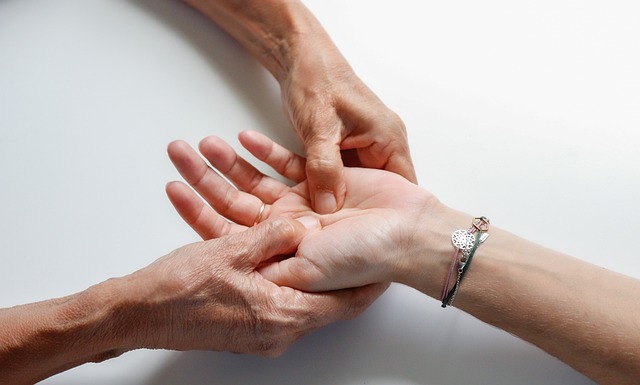Post-traumatic stress disorder (PTSD) is a complex mental health condition arising from traumatic experiences, significantly impacting emotional well-being and daily life. Effective PTSD treatment includes various therapies like Cognitive Behavioral Therapy (CBT), Eye Movement Desensitization and Reprocessing (EMDR), Dialectical Behavior Therapy (DBT), Trauma-Focused Cognitive Behavioral Therapy (TF-CBT), and trauma-focused mindfulness practices. CBT helps modify negative thought patterns, EMDR desensitizes traumatic memories, DBT manages emotional regulation, TF-CBT specializes in child and adolescent trauma, while mindfulness practices promote calmness and detachment from distressing memories. Group therapy offers support and community, and creative arts therapies provide safe expression and processing of traumatic experiences. These evidence-based approaches empower individuals to manage PTSD symptoms and lead more fulfilling lives.
Suffering from trauma can significantly impact an individual’s daily life, leading many to seek effective PTSD treatment. This article explores a range of therapy techniques designed to bring relief and healing to those grappling with post-traumatic stress disorder (PTSD). From cognitive behavioral therapy (CBT) and eye movement desensitization and reprocessing (EMDR) to trauma-focused mindfulness practices and creative arts therapies, discover proven strategies for navigating the road to recovery.
Understanding PTSD and Its Impact on Individuals

Post-traumatic stress disorder (PTSD) is a mental health condition that can affect individuals who have experienced or witnessed traumatic events. It’s a complex response to distressing, life-threatening, or seriously intimidating situations. The impact of PTSD can be profound and far-reaching, affecting not only an individual’s emotional state but also their daily functioning and relationships. Symptoms often include flashbacks, nightmares, severe anxiety, and avoidance behaviors related to the traumatic event.
Understanding PTSD treatment is crucial in helping individuals manage and overcome these challenges. Through various therapy techniques, such as cognitive behavioral therapy (CBT), eye movement desensitization and reprocessing (EMDR), or trauma-focused mindfulness practices, individuals can learn coping strategies to navigate their symptoms effectively. These therapies aim to process traumatic memories, reduce avoidance behaviors, and foster a sense of control and emotional well-being, ultimately enhancing the individual’s ability to lead fulfilling lives.
Common Therapy Approaches for Trauma Recovery

Many effective therapy techniques have been developed to aid in trauma recovery, with Post-Traumatic Stress Disorder (PTSD) treatment at the forefront. Cognitive Behavioral Therapy (CBT) is a widely used approach that helps individuals identify and challenge negative thought patterns arising from traumatic experiences. By modifying these thoughts and behaviors, CBT empowers patients to manage their symptoms effectively. Eye Movement Desensitization and Reprocessing (EMDR) therapy is another powerful tool that facilitates the processing of traumatic memories, reducing their distressing impact.
Additionally, Dialectical Behavior Therapy (DBT) offers valuable skills for emotional regulation and stress management, which can be particularly beneficial for individuals with complex trauma histories. Trauma-Focused Cognitive Behavioral Therapy (TF-CBT) combines CBT principles with a deep understanding of trauma’s effects on children and adolescents, making it an evidence-based choice for helping young survivors process their experiences. These approaches, among others, offer hope and healing for those navigating the challenges of PTSD treatment.
Cognitive Behavioral Therapy (CBT): A Step-by-Step Guide

Cognitive Behavioral Therapy (CBT) is a structured and evidence-based approach to PTSD treatment, focusing on challenging and modifying negative thought patterns and behaviors. The process begins with identifying traumatic memories or situations that trigger distressing emotions. Through a series of steps, individuals learn to recognize and question their thoughts, replacing unhelpful cognitive distortions with more realistic and positive ones. This therapy encourages patients to face and process traumatic memories gradually, helping them gain control over their emotional responses.
In CBT for PTSD, therapists guide clients through exposure therapy, where they safely confront traumatic memories in a controlled environment. This technique helps reduce the intensity of emotional reactions over time. By combining cognitive restructuring with exposure, individuals can learn to manage their symptoms and develop healthier coping strategies. CBT empowers patients to take an active role in their healing journey, offering them tools to manage PTSD symptoms effectively.
Eye Movement Desensitization and Reprocessing (EMDR) Technique

The Eye Movement Desensitization and Reprocessing (EMDR) Technique is a well-regarded therapy for aiding individuals in recovering from trauma, offering an innovative approach to PTSD treatment. This method leverages bilateral stimulation, often through side-to-side eye movements, while the individual recalls traumatic memories. The process helps desensitize patients to these memories, reducing their emotional intensity and associated distress.
EMDR has proven effective for various forms of trauma, from military combat to domestic violence. It facilitates a natural healing process, allowing individuals to integrate disturbing memories into their conscious mind in a safe manner. As a result, EMDR offers a promising avenue for those seeking PTSD treatment, promoting emotional resilience and improving overall well-being.
Trauma-Focused Mindfulness Practices

Trauma-focused mindfulness practices have emerged as a powerful tool in the arsenal of PTSD treatment. By encouraging individuals to focus their attention on the present moment, rather than reliving traumatic memories, this technique fosters a sense of calm and reduces anxiety. Mindfulness meditation, for instance, helps individuals become more aware of their thoughts and emotions without judgment, allowing them to detach from distressing memories and gain a sense of control over their reactions.
These practices are often integrated into cognitive processing therapy (CPT) and eye movement desensitization and reprocessing (EMDR), two evidence-based therapies for PTSD. Through regular practice, individuals can learn to observe their thoughts and feelings about the trauma without reacting intensely, ultimately helping them to process and heal from their experiences. Trauma-focused mindfulness not only aids in managing symptoms but also promotes overall well-being, enabling individuals to live more fulfilling lives despite their traumatic pasts.
Group Therapy Sessions: Benefits and Dynamics

Group therapy sessions play a significant role in the PTSD treatment process, offering unique benefits and dynamic interactions. One of its key advantages is the sense of community it fosters; individuals dealing with trauma find solace in sharing their experiences with peers who can relate. This shared understanding creates a supportive environment, reducing feelings of isolation commonly associated with traumatic events.
In these sessions, group members encourage each other through open discussions, offering valuable perspectives and alternative coping strategies. The dynamic nature of group therapy allows for immediate feedback and validation, promoting personal growth and healing. Additionally, the confidentiality aspect encourages honest expressions, enabling individuals to explore their trauma in a safe and non-judgmental setting.
Creative Arts Therapies for Expressing and Healing

Creative Arts therapies offer a unique and powerful approach to trauma relief, providing individuals with a safe space to express themselves and process their experiences. These therapies recognize that art, music, dance, and movement can be incredibly healing, especially for those struggling with PTSD treatment. Through artistic expression, clients can access and release emotions that may be difficult to articulate verbally, fostering a sense of empowerment and self-discovery.
One such therapy is Art Therapy, where individuals create visual art as a means of communication and healing. This process allows them to externalize their inner world, explore memories, and confront traumatic events in a controlled manner. Similarly, Music Therapy uses rhythm and melody to evoke emotions, promote relaxation, and facilitate self-expression. These creative outlets can help clients reprocess traumatic memories, reduce anxiety, and develop healthy coping mechanisms, ultimately supporting their PTSD treatment journey.
Building Resilience and Coping Strategies Post-Therapy

After undergoing therapy for trauma, individuals often need support in building resilience and developing effective coping strategies to manage their PTSD symptoms in the long term. This process involves learning new ways to respond to distressing memories or triggers, as well as fostering a sense of control and emotional stability.
Therapists can play a vital role in equipping clients with tools like mindfulness practices, cognitive reframing, and stress management techniques to enhance coping abilities. Encouraging engagement in meaningful activities, building a strong support network, and cultivating a growth mindset are also key aspects of fostering resilience post-therapy. These strategies empower individuals to navigate challenges and maintain their mental well-being even when facing difficult memories or emotions associated with past trauma.
